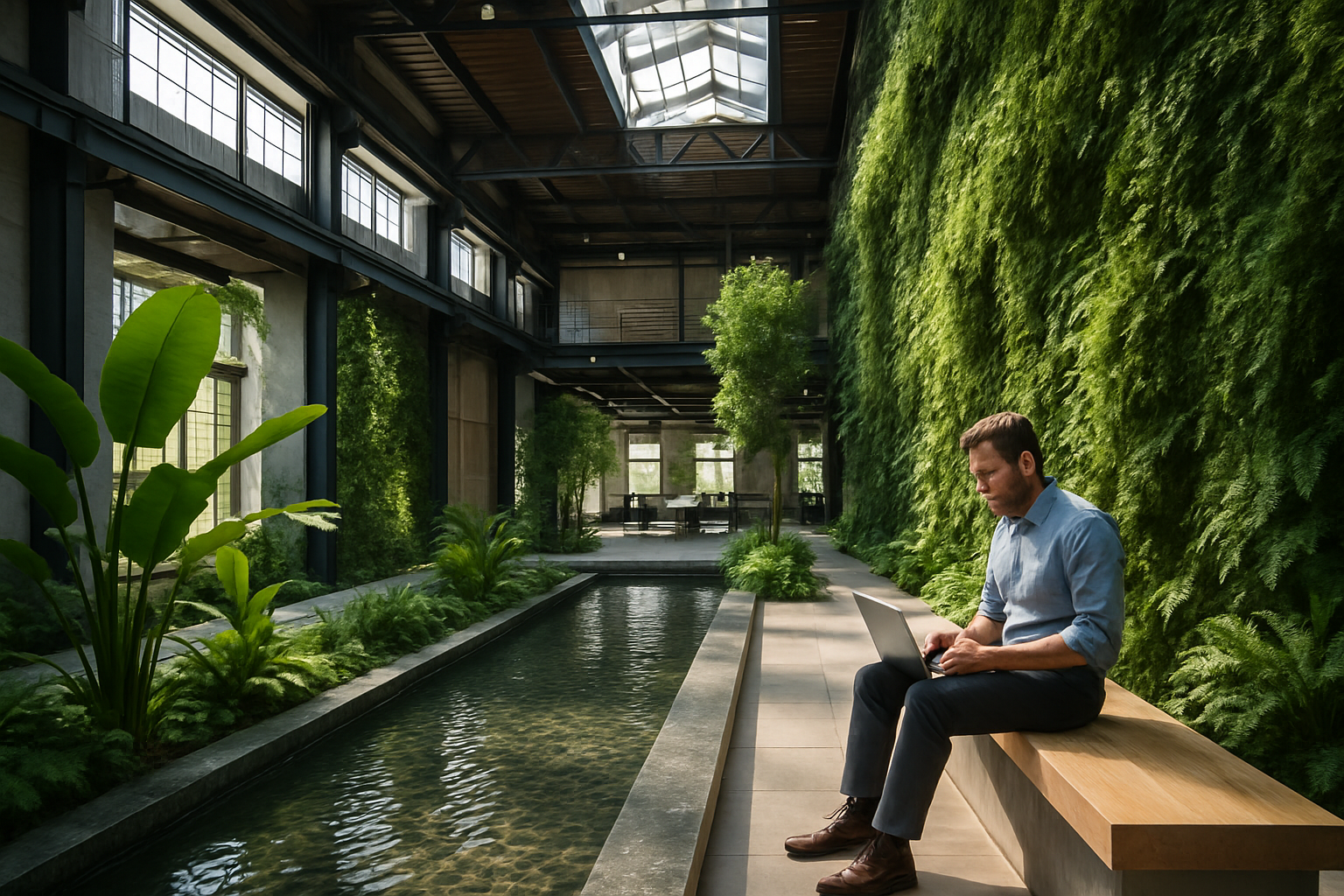Leveraging Biophilic Design in Industrial Workspaces
Manufacturing facilities reimagined through nature-inspired principles In the ever-evolving landscape of industrial design, a groundbreaking approach is taking root: biophilic design in manufacturing spaces. This innovative concept melds the efficiency of modern industrial processes with the innate human connection to nature, creating workspaces that not only boost productivity but also enhance employee well-being. As industries grapple with retention challenges and seek sustainable solutions, biophilic design emerges as a transformative strategy for the factories of the future.

The roots of this movement can be traced back to the early 20th century when architects like Frank Lloyd Wright began incorporating natural elements into building designs. Yet, it wasn’t until recent years that the industrial sector started to recognize the potential of biophilic principles in enhancing operational efficiency and worker satisfaction.
The Science Behind Nature-Inspired Industrial Spaces
Numerous studies have demonstrated the positive impact of biophilic elements on human cognition and well-being. In industrial settings, where precision and focus are paramount, these benefits can translate into tangible improvements in productivity and safety. Research indicates that exposure to natural light, green spaces, and organic patterns can reduce stress, improve cognitive function, and increase job satisfaction.
A landmark study by the University of Oregon found that employees with views of nature took 23% less sick leave than those without. Another study published in the Journal of Experimental Psychology revealed that the presence of plants in workspaces could increase productivity by up to 15%. These findings have profound implications for manufacturing environments, where even small improvements in efficiency can lead to significant gains.
Implementing Biophilic Elements in Manufacturing Facilities
Integrating biophilic design into industrial spaces requires a thoughtful approach that balances aesthetic considerations with practical constraints. Here are some key strategies being employed:
- Natural Light Integration: Redesigning factory layouts to maximize natural light exposure, incorporating skylights, and using light wells to bring sunlight deep into the building.
- Green Spaces: Creating indoor gardens, living walls, and outdoor break areas that provide workers with direct access to nature during shifts.
- Biomimicry in Equipment Design: Developing machinery and tools inspired by natural forms and processes, potentially improving ergonomics and efficiency.
- Natural Materials: Utilizing sustainable, natural materials in construction and furnishings where possible, such as wood, stone, and plant-based composites.
- Biomorphic Patterns: Incorporating organic shapes and patterns into the design of floors, walls, and structural elements to subconsciously connect workers with nature.
Case Studies: Biophilic Success in Industry
Several pioneering companies have already embraced biophilic design in their manufacturing facilities, serving as beacons for the industry. One notable example is a European automotive plant that integrated a series of indoor gardens throughout its assembly lines. The company reported a 20% reduction in absenteeism and a 15% increase in overall productivity within the first year of implementation.
Another case involves a pharmaceutical manufacturing facility in Asia that redesigned its sterile labs to include views of landscaped courtyards and installed circadian lighting systems. The result was a 12% improvement in quality control metrics and significantly higher employee satisfaction scores.
These success stories are prompting other industrial leaders to explore biophilic solutions, recognizing that the initial investment can yield substantial long-term returns in both human capital and operational efficiency.
Challenges and Considerations
While the benefits of biophilic design in industrial settings are compelling, implementation is not without challenges. Safety regulations, cleanroom requirements, and the need for specialized equipment can limit design options. Additionally, retrofitting existing facilities can be costly and disruptive to ongoing operations.
To address these challenges, companies are adopting phased approaches, starting with pilot projects in specific areas before scaling up. They are also collaborating with industrial designers and biophilic experts to develop innovative solutions that meet both regulatory requirements and design objectives.
Practical Strategies for Biophilic Industrial Design
• Conduct a biophilic audit of your current facility to identify opportunities for improvement
• Prioritize natural light by reconfiguring workstations and installing light-directing technologies
• Introduce plant life through low-maintenance, air-purifying species suitable for industrial environments
• Implement nature-inspired color schemes and textures in high-traffic areas and break rooms
• Invest in advanced air filtration systems that mimic natural air purification processes
• Create outdoor work areas for tasks that don’t require a controlled indoor environment
• Use virtual reality to provide nature experiences in areas where physical implementation is impractical
As industries continue to evolve, the integration of biophilic design in manufacturing spaces represents a significant shift towards more human-centric and sustainable practices. By harnessing the power of nature-inspired environments, companies can create industrial workplaces that not only meet production demands but also nurture the well-being and creativity of their workforce. As this trend gains momentum, it has the potential to redefine the very essence of industrial architecture and operational philosophy, paving the way for a more harmonious relationship between nature, technology, and human productivity.




